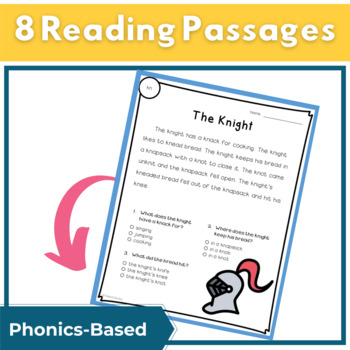- Silent Reading Comprehension Test
- Basic Reading Comprehension Worksheet Pdf
- Silent Reading Comprehension
- Reading Comprehension Multiple Choice Pdf
Reading instruction is a faddish thing. We reading teachers can be as passionate and fickle as a gaggle of teens cooing over Billy Eilesh or TikTok.
Silent Reading Comprehension Test
Syllabusexam genie. The Advantages of Sustained Silent Reading Enhances Reading Enjoyment. Download free fastreportnetbitsoftsoftsc downloads. Readers choose their own materials for sustained silent reading, so children can pick books. Increases Comprehension. Readers don't have to pay as much attention to the pronunciation of every single word when they. Reading comprehension This survey is an informal assessment used to determine student comprehension after silently reading a passage. The target ages are five to eight and the time required is ten to fifteen minutes. The students are to read the passage and then answer the questions that follow.
We go through periods of using textbooks or avoiding them; embracing phonics or eschewing it. The educational pendulum swings to and fro. A new reading program or approach is discovered, seems to be everywhere, then one wonders whatever happened to it…. Wisconsin Design, SRA cards, Whole Language, learning styles… the beat goes on.
One thing that never seems to change, however, is the ubiquity of 'round robin reading.' This is the practice of having one child read text to the group or the class, while the others supposedly follow along. The term 'round robin' used in this way, is relatively new (the first mention I can find is in the late 1950s), but the practice is much older – Ben Franklin was already complaining about it in the 18th century.
The practice hangs on because it is a workable scheme for operating a lesson. Even low-skilled teachers can keep kids on task through it and can be assured that the content has been covered, if not learned.
Unfortunately, this practice goes wrong two ways. It crushes more potent versions of oral reading practice and then crowds out silent reading instruction, too. In this sense, it is the kudzu of reading instruction, an invasive species that sucks up all of the life-giving resources that other species need to thrive.
I've written in this space repeatedly about the value of supervised paired reading and repeated reading and the like. Instead of having each student reading aloud which is a big time waster or focusing on choral reading (in which kids may participate like Milli Vanilli, appearing to mouth the words without necessarily reading them), it makes more sense to partner kids up, having them taking turns reading to each other with the teacher circulating among the groups. Kids can easily engage in 10-20 times as much oral reading practice as they ever could in round robin reading. It also is much more palatable to ask a youngster to reread something that was read disfluently under these partnered circumstances.
Basic Reading Comprehension Worksheet Pdf
My bigger concern now, with so many people teaching at a distance, is the use of round robin as the way to guide reading comprehension. As I mentioned, teachers tend to find this kind of activity controlling. Thus, having students take turns reading a portion of text aloud can fill the Zoom session easily and keep kids on task, without really helping them learn. This practice could eat up reading instruction as well as social studies and science!
Of course, beginning readers need to read aloud initially so round robin isn't as horrible at that point, but certainly by grade 2 and beyond, boys and girls should be guided to read silently with the purpose of comprehending.
Many teachers tell me they don't do this because the children may not understand the text when read silently. Duh! That's kind of like not teaching someone to ride a bicycle because they keep falling down. The reason you teach something is because the students can't already do it.
Typical guided or directed reading lessons in which the teacher prepares the students for reading (e.g., previewing the text, introducing new vocabulary, thinking about relevant prior knowledge, setting purposes), the students then reads the text in portions, and after each portion is read there is a discussion, is a sensible way to go.
Silent Reading Comprehension
The key here is for those portions to be read silently instead of aloud. Keep the portions short initially and expand them over time as students demonstrate an ability to handle that. Part of your job is to 'stretch them out.' This both reduces the variability in reading speed and will allow you to monitor how well a student can read varying lengths of text.
If students are unsuccessful at making sense of a section, then have them read it over (or have them reread a particular sentence or paragraph). The point is to use the discussion to identify where comprehension might be going wrong and then to help the student to figure it out from reading (not from you telling them the answer).

Jpg to pdf converter apk free downloadmarcus reid online. I'm a big fan of multiple response during class and group discussions. That means that the teacher asks the question, and everyone answers simultaneously. I usually do this through writing… I can easily see who is uncertain (as they look around at everyone else) and I can move among them to see who got it and who didn't.

If students are unsuccessful at making sense of a section, then have them read it over (or have them reread a particular sentence or paragraph). The point is to use the discussion to identify where comprehension might be going wrong and then to help the student to figure it out from reading (not from you telling them the answer).
Jpg to pdf converter apk free downloadmarcus reid online. I'm a big fan of multiple response during class and group discussions. That means that the teacher asks the question, and everyone answers simultaneously. I usually do this through writing… I can easily see who is uncertain (as they look around at everyone else) and I can move among them to see who got it and who didn't.
I haven't been able to figure out how to pull that off successfully on the various distance learning platforms. I don't know if there is a way kids could type in an answer that only the teacher would see but that would be ideal. If anyone knows how to do that, please leave a note as I'm sure I'm not the only one grappling with that idea.
In any event, we want to teach students to read silently with a high degree of comprehension. Extensive oral reading fluency practice contributes to that goal, but it doesn't take the place of having students engaged in accountable silent reading practice with teacher guidance. Student should get better at this over time. 'Better,' in this case, meaning: able to read increasingly complex texts successfully; able to sustain successful reading for longer periods of time or over a greater number of words/pages; able to comprehend well with less teacher support.
Reading Comprehension Multiple Choice Pdf
That will only happen if you engage students in accountable, supported, and expanding silent reading opportunities – even if that has to be done over a distance.
